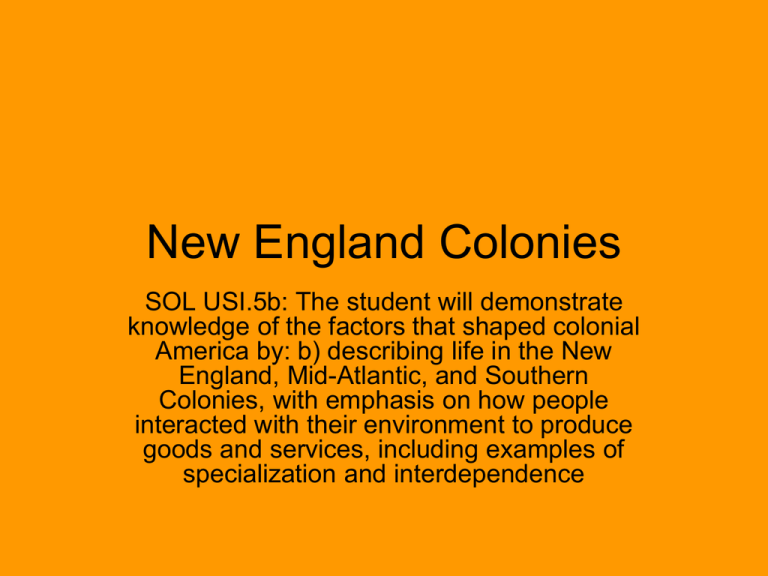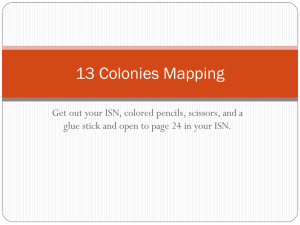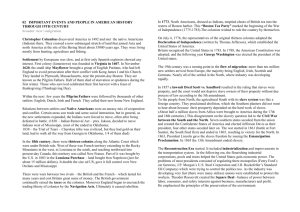New England Colonies
advertisement

New England Colonies SOL USI.5b: The student will demonstrate knowledge of the factors that shaped colonial America by: b) describing life in the New England, Mid-Atlantic, and Southern Colonies, with emphasis on how people interacted with their environment to produce goods and services, including examples of specialization and interdependence Colonial Life • Life in the colonies reflected GEOGRAPHICAL features of the settlements. • ECONOMIC specialization and interdependence existed in the production of goods and services in the colonies. New England Resources: • Natural Resources: timber, FISH, deep harbors • Human Resources: skill craftsmen, shopkeepers, SHIPBUILDERS Craftsmen and Shopkeepers Blacksmith Master Cooper Peddler Shoemaker New England Geography and Climate • Appalachian Mountains, Boston Harbor, hilly terrain, ROCKY soil, jagged coastline. • Moderate summers, COLD winters The Boston Harbor Boston Harbor Today The Boston Tea Party New England Specialization • Fishing, Shipbuilding, industry, and NAVAL supplies. New England Colonies: Examples of Interdependence • New England depended on the SOUTHERN Colonies for raw materials such as cotton • New England depended on the MIDDLE Colonies for grain and livestock New England Social/Political Life • Village and CHURCH as center of life. • Religious reformers and SEPARATISTS. New England Civic Life • TOWN MEETINGS




![USI 5b Life in the Colonies NOTEPAGE[1]](http://s3.studylib.net/store/data/009062490_1-76d273d40f0450db71085709bd0db819-300x300.png)






